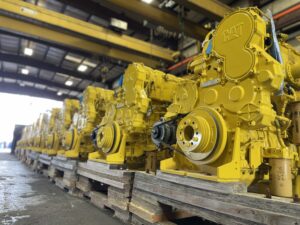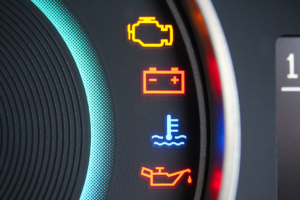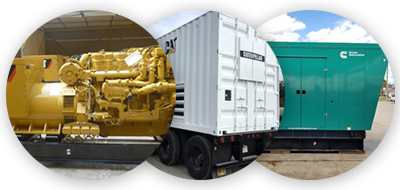
Back in the day, the drilling rigs used to be made of wood. They were permanent structures that were left in place after the completion of the wells. Over time, manufacturers managed to make steel rigs, and the wooden rigs became a rare sight.
Today, the rigs are made using land based drilling power modules. Therefore, you can move them without dismantling the entire structure. Regardless of their huge sizes, all steel-made rigs today can be taken apart and transported to another site.
Here’s an overview of the land based drilling power modules and different types of rigs depending on their depth, portability, and maximum power.
What Are Land Based Drilling Rigs?
Land based drilling rigs are set up to drill gas and oil wells. They are available in different sizes, based on the model and the manufacturer. Some of them can drill as deep as 30,000 feet.
Moreover, these drills have rotary drillings, and manufacturers advertise their products as having jackknives or cantilevered masts. These are strong, moveable structures that have a small footprint.
In fact, masts are crucial for a rig’s portability. They are prefabricated and put down when the rig has to be moved. These masts are mainly a part of land based drilling power modules since they’re heavier – made of steel.
While there are many types of land based drilling rigs, they can be broadly categorized into two types:
- Conventional
- Mobile
Do note that all modern rigs are moveable. Mobile merely means the effort it takes to move a rig system from one place to another.
What Are Land Based Drilling Power Modules?
Land based drilling power modules are designed according to the oil industry customers’ requirements to offer ultimate versatility and performance. These power modules go through the following steps:
- Design
- Development
- Assembly
- Testing
In doing so, the companies ensure that customers are receiving products that are up to the industry standards. When using diesel-based power modules, it’s important to ensure that the base is designed properly.
If there’s a misalignment between the generator and the engine, it will cause vibrations. Furthermore, these vibrations reduce the longevity of the bearings and couplings.
That’s why most companies use a three-point mounting system since it allows properly aligned mounting of the generator and the engine.
Since they’re a single-source product, these modules come fully supported and may even have customizable features, including:
- KATO alternators: These alternators provide high opposition to moisture and chemicals, extending the generators’ life. They have a certain insulation system and an adapted enclosure to accomplish this effect.
- Cooling Systems: Most power modules are liquid or air-cooled. The manufacturers determine the cooling methods according to the generator’s size and intended use. While smaller modules need air-cooling systems, larger ones work best with liquid-cooling systems.
- Air Shutoff Valve: Additional of an air shutoff valve in a drilling power module is helpful since it prevents accidents. When a diesel engine comes in contact with flammable gases, such as propane or natural gas, the air shutoff valve comes into action. It stops the air supply, starving the engine of fuel.
Typical Equipment In A Land Based Power Module
Any land rig power module has some typical equipment while the rest are optional. Here are the standard equipment in land based power modules.
- Air and Exhaust: The standard equipment include air cleaners, dry flexible fittings, and an air cleaner servicing indicator.
- Base Arrangement: The base arrangement has certain dimensions depending on the size of the rig. It also has tailboarding installations and oil drain extensions.
- Cooling: The cooling system contains water connections and a jacket water pump to prevent overheating. The water jacket is a casing filled with water with an outlet and inlet vent that allows water circulation. Thus, this flow of water enables the maintenance of a precise temperature in the system.
- Fuel: The components include a fuel filter, transfer pumps, and fuel lines.
- Generator: The generator must be three-phase, providing a steady and powerful current. Moreover, it should be two-bearing, operating at 600 volts.
- Instrumental Panel: The instrumental panel contains the controls for fuel pressure, oil filter pressure, lubricating oil pressure, service meter, water temperature, and tachometer.
- Protection Devices: The protection devices are in place to prevent accidents. These include alarm switches for water temperature and oil pressure. Some other systems include hydra-mechanical shutoffs, air inlet shutoff, and air-actuated shutoffs.
Apart from these, some other equipment is also a part of the power module. These miscellaneous equipment include mountain rails, dual tachometer drive, housing, and vibration damper.
Optional Equipment In A Land Based Power Module
Depending on the task at hand, some additional equipment can also be added, such as jacket water heatings in the cooling system and air cleaners or air shields in the exhaust systems.
Moreover, some miscellaneous installations include base modifications and torsional analyses.
A torsional analysis simulates the dynamic operation of the coupling, motor, and pump when they interact during twisting.
Specifications Of A Land Based Power Module: An Example
To understand land based power modules in detail, let’s take a look at an example: the QSK38 Land-Based Power Module.
It has Tier-2 certification and a power of up to 1034HP. Making a 6.25-inch bore and featuring a turbocharged aspiration system, the power module has an electric governor.
As for the cooling system, it uses horizontal and vertical discharge capabilities. The total lube oil capacity is 57 gallons, while the module has a three-point mounting base design.
The three-point design ensures that the generator can be properly mounted on the land rig base. Thus, it assures safe and convenient transport of the power module on uneven surfaces.
Keeping in line with the EPA’s mandate, most modern power modules have Tier 4 certification.
Conclusion
Manufacturers design land based drilling power modules, develop them and send them for assembly. After that, these modules are tested to ensure high efficiency and quality.
Moreover, some companies also offer customizable features, such as cooling systems, air shutoff valves, Kato alternators, and electronic generator control systems.
The modules you choose depend on your requirements, the excavation landscape, and the maximum depth required.






